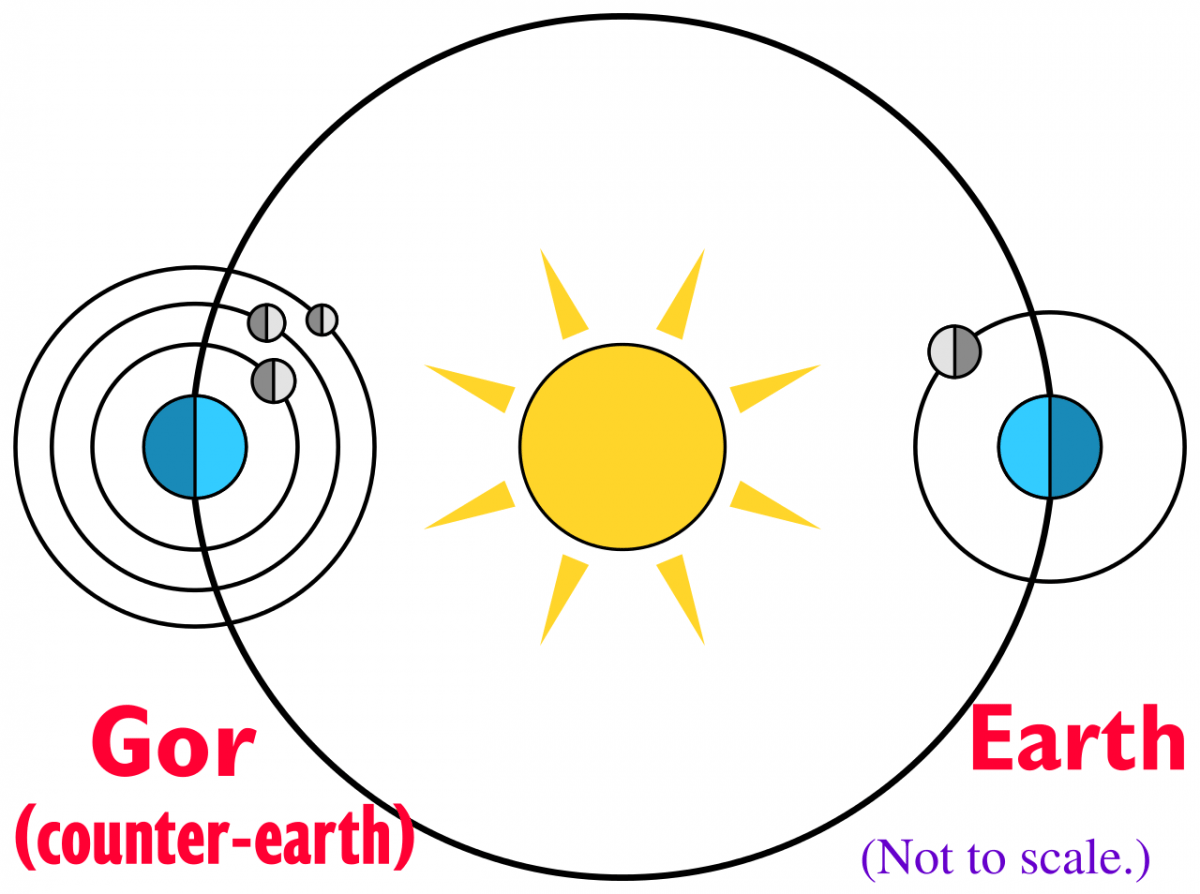Could there be a planet on the opposite side of the Sun? If so, how would we know?
Although it’s a popular idea in science fiction, we know beyond a doubt that there isn’t a planet hidden behind the Sun. Spacecraft we’ve sent into the solar system would have plenty of opportunity to see such a planet, and not have been observed. In 2006, for example, two STEREO coronagraph spacecraft were launched in a solar orbit leading and trailing Earth in order to keep constant watch on the Sun. These spacecraft would be in the perfect position to observe a “hidden planet.”
But even before the age of spacecraft we would have seen evidence of such a planet. By the 1700s we were able to calculate the small gravitational influences between planets. We were so good at it that by the 1800s we were able to use these perturbations to discover the planet Neptune. Any planet on the other side of the Sun would have perturbed the orbits of Venus and Mars to the point that we would have known of its existence centuries ago.
These small perturbations would also make the orbit of such a “counter-Earth” unstable. Earth’s orbit isn’t a perfect circle, and so any counter world would not always be directly opposite the Sun at all times. As Venus and Mars passed near the world their tugs would shift the orbit slightly, and over time Earth and a counter-Earth would shift to the point that their orbits would either intersect, or they might do a gravitational dance such as Saturn’s moons Janus and Epimetheus, which exchange orbits every now and then.
It’s a great idea for science fiction, but it isn’t likely to happen in the real world.












Comments
Hi Brian,
Here’s a simulation of this.
Anti-Earth is an Earth-mass planet placed exactly opposite Earth. This just places it at the top of a horseshoe orbit, which like you said, makes it like Janus and Epimetheus.
Don’t increase the time step beyond 16768 or the system will fall apart for different reasons.
http://orbitsimulator.com/gravitySimulatorCloud/simulations/1468085020465_anti_Earth.html
If I’m not mistaken, a counter-Earth is featured in quite a few sci-fi stories, with few (if any) being consistent with the astronomical and physics knowledge of the day (i.e. makes such a concept impossible).
Which raises this question, for me: when was the earliest that a counter-Earth could have been robustly ruled-out? Certainly some time after Newton’s publication of the universal law of gravitation, but how much afterwards?
It started fading out almost as soon as the heliocentric model was developed by Copernicus. As with all scientific theories, it wasn’t very useful once a more natural theory was developed. After Galileo confirmed it through observations, heliocentricism made the counter-Earth irrelevant. So it was disproven about 33 years before Newton was born.